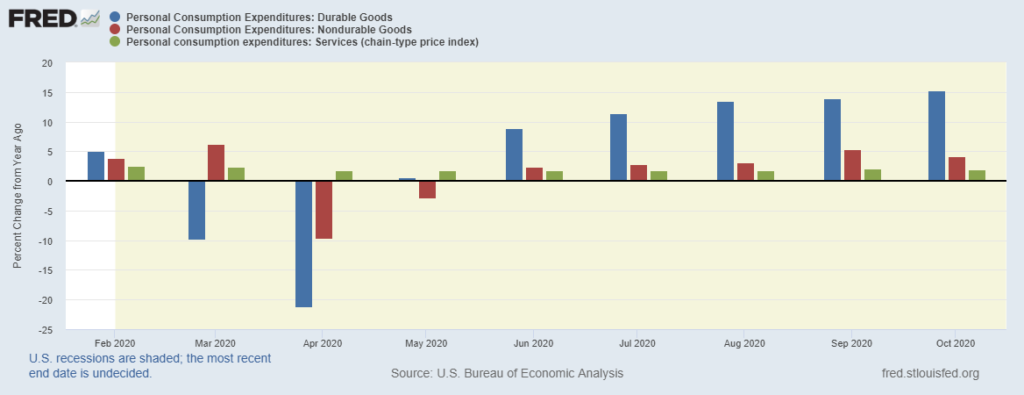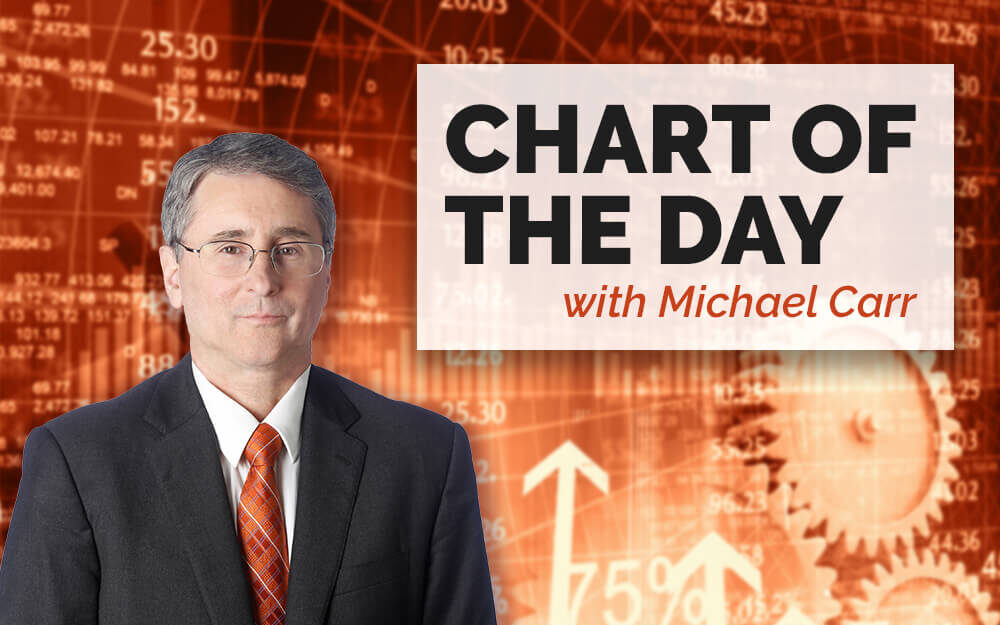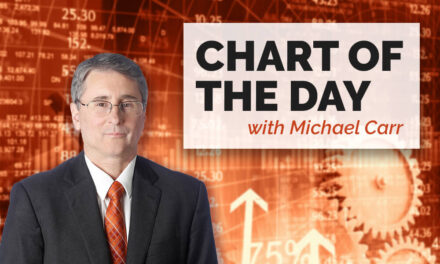As Congress debates new stimulus programs, the effects of the last stimulus package are coming into focus.
The CARES Act provided payments of up to $1,200 per adult and $500 per child under 17 years old, along with extended unemployment benefits of $600 per week.
Those funds helped many families survive the economic harm of the COVID-19 pandemic and helped others increase discretionary spending. You can see this in the chart below, which shows large year-over-year growth in spending on durable goods (the blue bars).
Personal Spending Compared to 2019

Source: Federal Reserve.
Whirlpool Stock Trade: Benefit From a Snapback to ‘Normalcy’
Durable goods include kitchen appliances and televisions. Consumers reined in these large purchases as the economy shut down. Stimulus payments seem to have had the desired effects on personal spending here.
Red bars in the chart show spending on nondurable goods, which includes purchases at grocery stores. The relatively large gain in March reflects panic buying, and April’s decline shows families working through emergency supplies.
Spending on services has been flat. This is the key to recovery, as I noted earlier this week.
The chart above holds a trading idea for 2021.
Purchases of nondurable goods reversed their gains after the initial buying pressure. I expect to see the same pattern in durable goods. After the surge in appliance shopping, I expect a smaller than average number of purchases next year.
One of the beneficiaries of these purchases has been appliance company Whirlpool Corp. (NYSE: WHR). Shares of Whirlpool stock peaked more than 229% above their March lows in October.
As sales decline, earnings will likely miss expectations, and the stock should snap back toward lower values. A 25% decline in Whirlpool stock is possible as earnings growth reverts to average.
Traders can benefit from price declines with put options. Puts with an exercise price of $180 expiring in January 2022 could gain more than 100% if WHR drops 25%.
In 2021, bulls will be searching for stocks that can deliver gains, while bears should look at WHR and stocks that benefited from one-time stimulus payments. Both bulls and bears can profit in almost any market.
Michael Carr is a Chartered Market Technician for Banyan Hill Publishing and the Editor of One Trade, Peak Velocity Trader and Precision Profits. He teaches technical analysis and quantitative technical analysis at the New York Institute of Finance. Mr. Carr is also the former editor of the CMT Association newsletter, Technically Speaking.
Follow him on Twitter @MichaelCarrGuru.




